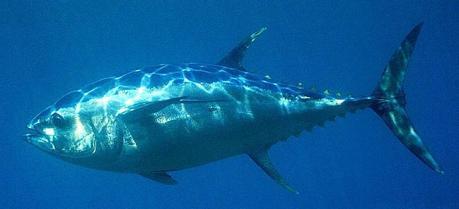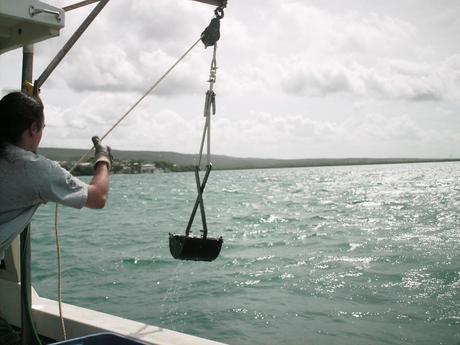 A bigeye tuna (Thunnus obesus).
A bigeye tuna (Thunnus obesus).Scientists from Stanford University and the National Oceanic and Atmospheric Administration (NOAA) have discovered that crude oil interrupts a cellular pathway that allows fish heart cells to beat effectively.
The toxic consequence is a slowed heart rate, reduced cardiac contractility and irregular heartbeats that can lead to cardiac arrest and sudden cardiac death.
The research, published in the Feb. 14 issue of Science (see footnote), is part of the ongoing Natural Resource Damage Assessment of the April 2010 Deepwater Horizon oil spill.
While crude oil cardiotoxicity in developing fish is well-known, the physiological mechanisms underlying its harmful effects were unclear. Stanford and NOAA scientists studying the impact of crude oil from the Deepwater Horizon spill on tuna discovered that it interrupts the ability of fish heart cells to beat effectively.
Crude oil is a complex mixture of chemicals, some of which are known to be toxic to marine animals. Past research has focused in particular on “polycyclic aromatic hydrocarbons” (PAHs), which can also be found in coal tar, creosote, air pollution and stormwater runoff from land. In the aftermath of an oil spill, PAHs can persist for many years in marine habitats and cause a variety of adverse environmental effects.
The researchers report that oil interferes with cardiac cell excitability, contraction and relaxation—vital processes for normal beat-to-beat contraction and pacing of the heart.

Andrew Mason with NOAA’s Center for Coastal Monitoring and Assessment collecting a sediment sample. (Credit: NOAA)
Their tests revealed that very low concentrations of crude oil disrupt the specialized ion channel pores—where molecules flow in and out of the heart cells—that control heart rate and contraction in the cardiac muscle cell.
This cyclical signaling pathway in cells throughout the heart is what propels blood out of the pump on every beat. The protein components of the signaling pathway are highly conserved in the hearts of most animals, including humans.
The researchers found that oil blocks the potassium channels distributed in heart cell membranes, increasing the time to restart the heart on every beat. This prolongs the normal cardiac action potential, and ultimately slows the heartbeat. The potassium ion channel impacted in the tuna is responsible for restarting the heart muscle cell contraction cycle after every beat, and is highly conserved throughout vertebrates, raising the possibility that animals as diverse as tuna, turtles and dolphins might be affected similarly by crude oil exposure. Oil also resulted in arrhythmias in some ventricular cells.
“We’ve known from NOAA research over the past two decades that crude oil is toxic to the developing hearts of fish embryos and larvae, but haven’t understood precisely why,” said coauthor Nat Scholz, leader of the Ecotoxicology Program at NOAA’s Northwest Fisheries Science Center in Seattle. “These new findings more clearly define petroleum-derived chemical threats to fish and other species in coastal and ocean habitats, with implications that extend beyond oil spills to other sources of pollution such as land-based urban stormwater runoff.”
The new study also calls attention to a previously underappreciated risk to wildlife and humans, particularly from exposure to cardioactive PAHs that also exist at relatively enriched levels in air pollution.
The research was funded by NOAA, Stanford University and the Monterey Bay Aquarium Foundation.
Fabien Brette, Ben Machado, Caroline Cros, John P. Incardona, Nathaniel L. Scholz, Barbara A. Block (2014). Crude Oil Impairs Cardiac Excitation-Contraction Coupling in Fish Science, 343 (6172), 772-776 DOI: 10.1126/science.1242747
